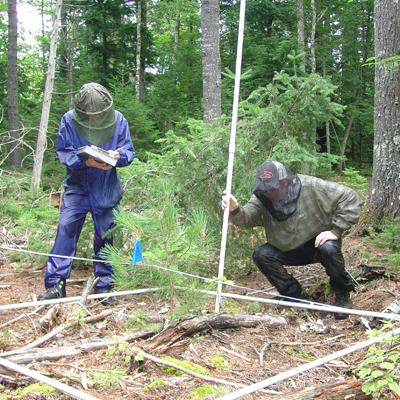Spatial and Temporal Patterns of Tree Regeneration in the Acadian Forest of East-Central Maine

The long-term sustainability of forest productivity hinges on tree regeneration that will produce stands to meet future demands for wood fiber. The dynamic and complex nature of forests often complicates management objectives. Silviculture can provide a level of control over forest dynamics by limiting the number of possible responses through deliberate manipulation of stand structure and composition to match the regeneration requirements of desired tree species. This NSRC-funded project was based on data collected from a long-term, natural disturbance-based silviculture experiment on the Penobscot Experimental Forest in the Acadian forest of central Maine. NSRC scientists tested hypotheses on the response of tree regeneration across a range of spatial scales in mixed wood stands.
Part 1 of this project focused on understory spatial pattern responses to gap harvesting. Results supported the hypothesis that the grain, or resolution, of understory spatial pattern for both tree regeneration and canopy openness increases with increasing gap size and harvest intensity across treatments. Researchers concluded that adopting methods to estimate explicit spatial pattern into silviculture experiments broadens the range of ecological responses detectable in long-term research.
In part 2, researchers examined the role of neighborhood-scale factors in determining understory patterns of tree regeneration richness. Findings highlighted the importance of balsam fir regeneration density and canopy openness in structuring understory patterns of tree regeneration richness in the Acadian forest of central Maine. If enhancing tree species richness is an objective for gap-based silviculture in Acadian mixed woods, then additional treatments may need to be applied to reduce understory balsam fir density.
